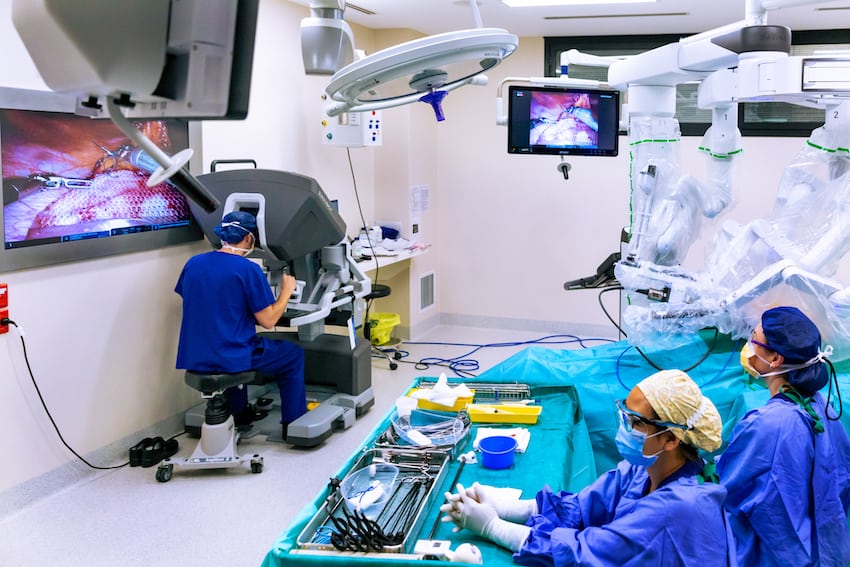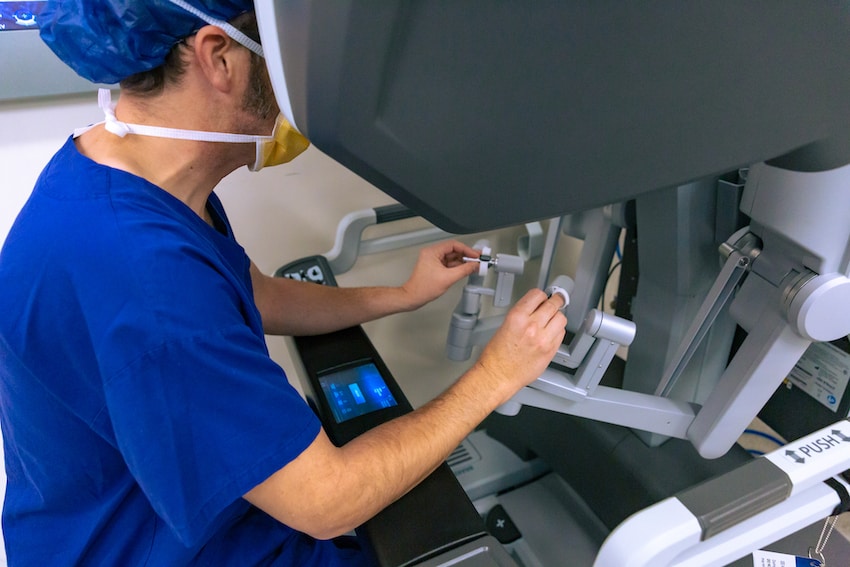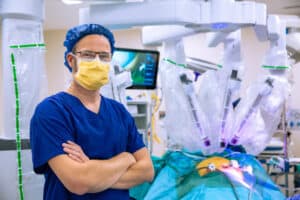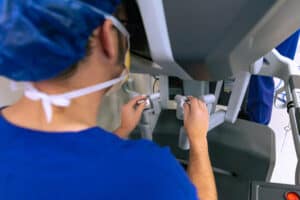What is robotic assisted surgery?
da Vinci Xi Surgical System
In 2000, the da Vinci Surgery System broke new ground by becoming the first robotic surgery system approved by the FDA for general laparoscopic surgery. This was the first time the FDA approved an all-encompassing system of surgical instruments and camera/scopic utensils.
Benefits of Robotic Assisted Hernia Surgery
- Few complications (infection)
- Less pain
- Quicker recovery times (less time spent in the hospital)
- Smaller, less noticeable scars
“Robotic surgery has so many advantages over traditional keyhole laparoscopic surgery. The visibility of the operation I have as the surgeon in the robotic console is truly in 3D because the camera actually has two cameras built in – one for each eye delivering genuine 3D images. The computer interface between my hands and fingers and the instruments also means I am able to ‘scale’ my movements, meaning a larger movement of my hands on the outside can be translated into a smaller precise movements of the robot on the inside through small incisions. The robot also allows me to ‘clutch’ the instruments, holding the tissues and instruments exactly in place while I return my hands to their optimal working zone without losing grip of whatever I’m holding at the time. Ultimately, all these features makes robotic surgery easier and more efficient and I’m able to perform more complex surgical tasks with minimal difficulty, even performing surgery that otherwise would be too technically challenging with traditional keyhole approaches. Robotic technology continues to evolve and is clearly the way of the future. I’m proud to be involved as an early adopter of this revolutionary approach and to be able to offer the benefits of robotic surgery to suitable patients whenever it is appropriate.“
A/Prof Charles Pilgrim

Robotic Groin Hernia Surgery
Robotic assisted hernia surgery allows A/Prof Pilgrim to repair groin hernias with a type of mesh that is like velcro and sticks in place not requiring any other fixation like staples that are frequently used in standard keyhole hernia repairs. This has the theoretical benefit of reduced postoperative pain and there is some new evidence emerging that patients may need less strong painkillers following robotic groin hernia surgery compared to other approaches.
Robotic Incisional Hernia Surgery
Incisional hernias can also be repaired with the robotic approach and in these cases the hole through which the hernia has developed can be stitched closed using the robot and then the mesh used to reinforce the repair stitched in place as well (rather than being stapled, again with the reduced theoretical risk of postoperative pain). Closing the defect is also aided immensely by using the robotic approach technically.

If you would like to know more about robotic surgery, please book an appointment online or call us on (03) 9509 4811 to make an appointment.





